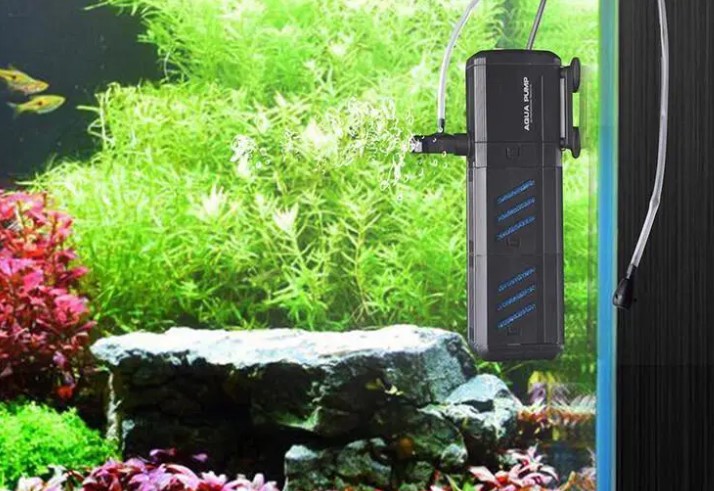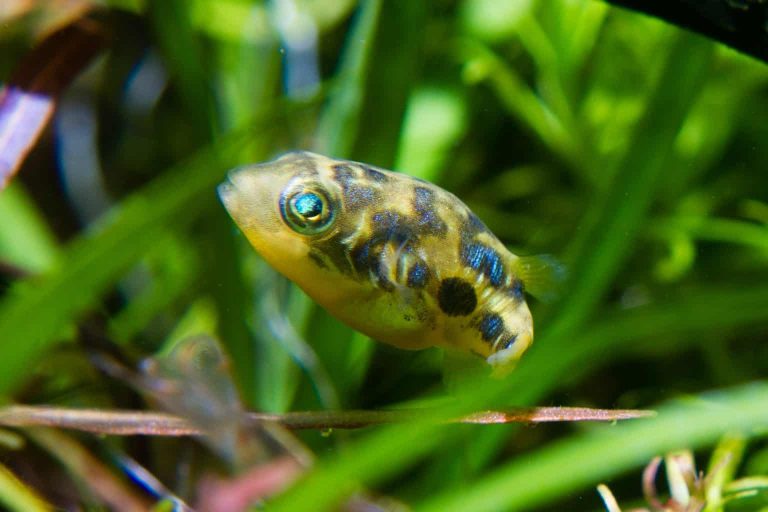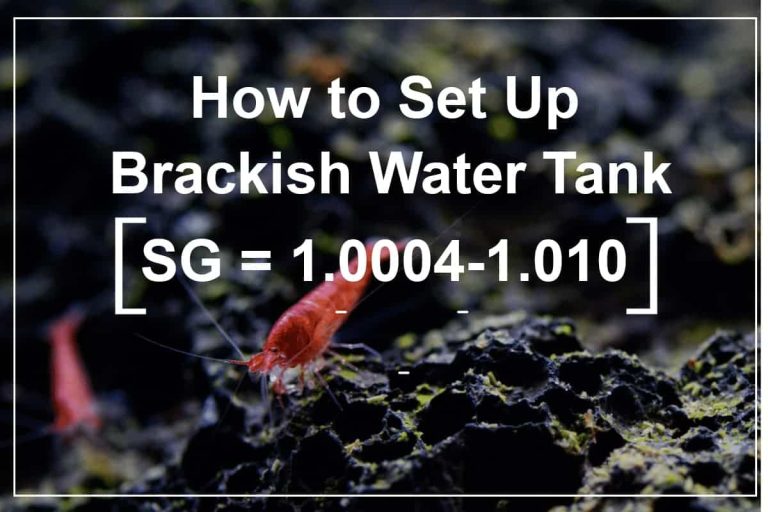Mastering Fish Tank Maintenance: Where to Position Your Filter
The filter in a fish tank should be placed near the water’s outflow. It should be submerged in the water and should have enough space for the water to flow through it.
Filters are essential for keeping a fish tank clean and habitable for fish. They work by removing debris, chemical impurities, and waste that accumulates in the water. Without a filter, the water can quickly become toxic and cause harm to the fish.
There are many types of filters available, including hang-on-back, canister, and sponge filters. Each type of filter has its own setup requirements, but they all need to be properly installed to work efficiently. In this article, we’ll explore the different types of filters and their installation requirements to keep your fish tank healthy and clean.

Credit: www.petguide.com
The Role Of Filters In Fish Tank Maintenance
Function Of Filter In Fish Tank
Filters are essential components in keeping fish tanks healthy for aquatic life. Filters remove waste, debris, and toxins from the water, creating a safe and hygienic environment for fish, plants, and other marine creatures. The primary function of a filter is to circulate and aerate the water, which helps in breaking down harmful chemicals such as ammonia and nitrites into beneficial nitrates.
Filters also help to maintain the ph level and water clarity, which is crucial for fish health.
Here are some ways in which filters help:
- Remove toxins and debris
- Promote oxygenation
- Support beneficial bacteria growth
- Maintain ph levels
- Enhance water clarity
Importance Of A Good Filter System
Maintaining a good filter system is crucial for the health and survival of aquariums. A proper filter system ensures that the aquarium water is clean and healthy for the aquatic life inside it. A poor filter system can lead to the buildup of ammonia, nitrites, and nitrates that are harmful to fish, plants, and other aquatic creatures.
Here are some reasons why a good filter system is essential:
- Promotes fish health
- Protects beneficial bacteria
- Removes harmful toxins
- Maintains water clarity
- Provides oxygenation
Types Of Filters
There are different types of filters available in the market, and choosing the right one is crucial in maintaining a healthy fish tank. Each filter type has a unique way of working, but their purpose remains the same- to keep the water clean and healthy for the aquarium inhabitants.
Here are some of the common types of filters:
- Hang-on-back filters
- Canister filters
- Sponge filters
- Power filters
Filters play a crucial role in maintaining a healthy and safe environment for the inhabitants of an aquarium. Regular maintenance and cleaning of the filter system enhances its longevity and ensures that the tank remains a healthy and happy home for the aquatic creatures.
Key Considerations For Filter Placement
Where do you put a filter in a fish tank: key considerations for filter placement
A well-maintained filter is crucial for your fish tank’s health, but where you place that filter can significantly impact its effectiveness. In this section, we will discuss the factors that determine the ideal location for your fish tank filter.
Factors That Determine The Ideal Location For Your Fish Tank Filter
There are several factors to consider when deciding where to place your fish tank filter. Here are some key points to help guide you:
- Effective filtration is essential for your aquarium’s health and prevents the build-up of harmful bacteria, toxins, and debris.
- The filter should be placed in an area with good water flow to ensure maximum filtration. Adequate water flow will also help distribute oxygen evenly throughout the aquarium.
- The filter should be placed in an area that does not impede the fish’s movement but is still easily accessible for maintenance and cleaning.
Importance Of Considering Tank Size And Water Flow When Positioning Your Filter
The following are some points to consider when positioning your filter based on tank size and water flow:
- In a smaller aquarium, the filter’s placement is not as crucial since the water will be circulating throughout the entire tank. However, it should be placed in a location where water flow is more robust.
- In larger aquariums, multiple filters may be needed, and each should be positioned in different areas to ensure efficient water circulation.
- The filter’s size should also be appropriate for the aquarium size, and its capacity should be able to handle the tank’s water volume.
- Avoid placing the filter too close to the water surface, as this can cause splashing and noise. Instead, place it on the tank’s bottom or in a corner.
When it comes to filter placement, ensuring proper water flow is essential. It’s also crucial to consider tank size and the filter’s size and capacity. Remember, the goal is to maintain clean and healthy water for your fish to thrive.
Finding The Ideal Position For Your Filter
How To Determine The Perfect Location For Your Filter
Before setting up a filter in your fish tank, it is crucial to determine the best spot to ensure maximum efficiency. Here are some tips to help you figure out where to place your fish tank filter:
- Identify the type and size of your fish tank filter and make a note of the recommendations provided by the manufacturer.
- Consider the water flow rate and direction of the filter as it can impact the water flow in the tank and oxygenation levels.
- Choose a location for your filter close to the power source, away from direct sunlight and where there is enough space for easy maintenance.
- Avoid placing the filter where strong currents can create a turbulent environment in your fish tank.
Once you have identified the ideal location, set up the filter and monitor the changes closely. If you notice any negative impact on water flow or fish behavior, experiment with the position of the filter until you find the sweet spot.
Tips For Experimentations With Placements
When finding the ideal location for your fish tank filter, it may take some experimentation to determine the best placement. Here are some tips for testing and adjusting your filter’s position:
- Start with the recommended placement or your first intuition about filter placement.
- Monitor the water flow rate, oxygenation levels, and behavior of your fish after a period of at least 24 hours.
- If everything appears stable, great! If not, try changing the filter location slightly. Consider moving the filter a few inches in any direction to determine how it affects the water flow rate.
- Monitor the tank closely for changes, and adjust the filter location accordingly.
Impact Of Filter Position On Water Circulation And Oxygenation
The location of your filter can significantly impact the water flow rate in your fish tank, which ultimately affects oxygenation levels. Here are some ways filter placement can impact water circulation and oxygenation:
- If the fish tank filter is placed on one side of the tank, it can lead to uneven water distribution and insufficient oxygen levels on the other side of the tank.
- If the water flow rate is too strong, it can cause turbulent water flow, leading to stress in fish.
- If the water flow rate is too weak, areas in the tank can become stagnant, leading to inadequate oxygenation.
Therefore, it is essential to set up your filter in an area that provides even distribution of water flow and efficient oxygenation levels to maintain a healthy and thriving fish tank.
Maintenance Strategies For Ensuring Optimal Filter Performance
Maintaining your fish tank filter is crucial for keeping your aquatic pets safe and healthy. Not only does it help to remove harmful substances from the water, but also ensures the longevity of the filter unit. Here are some strategies for maximizing the performance of your fish tank filter:
Regular Cleaning And Maintenance Of Filter
Regular cleaning and maintenance of the filter is essential to keep it working correctly. Here are a few tips to follow:
- Weekly cleaning should be done for mechanical filters, such as sponge filters, by rinsing them with tank water. Chemical filters, such as carbon filters, should be replaced monthly.
- Never clean all the filter media at the same time. This will prevent beneficial bacteria from being disrupted entirely.
- Perform a comprehensive cleaning of the filter every few months, this is done by disassembling the filter, cleaning each media individually (mechanical, chemical, biological), and reassembling the filter.
- Replace any worn or damaged parts to maximize the filter’s efficiency.
Key Indicators For When Filter Maintenance Is Necessary
Keeping an eye on changes in your filter’s performance can help you maintain optimal filter performance. Here are some signs that you should watch out for:
- Decreased water flow: This is a strong indication of a clogged filter media, and the flow must be restored to prevent buildups of ammonia and nitrate in the tank water
- Noisy filter: It indicates some malfunction; it could be a piece of debris caught in the impeller, insufficient water level, or a faulty motor.
- Smelly water: This is typically a sign of a dirty biological filter, which needs immediate action to prevent a fish tank catastrophe.
Essential Tools And Supplies For Maintenance
To maintain optimal filter performance, you need the following tools and supplies:
- A clean bucket: To fill the filter with tank water
- A syphon hose: To remove debris build-up in the filter media
- A scrub brush or toothbrush: To clean the filter components
- A water test kit: To test the water quality regularly
- Replacement filter media: To replace worn-out filter media
- Spare parts: Such as impellers and motors, to rectify malfunctions.
By following these maintenance strategies, you can maintain optimal filter performance, resulting in a clean and healthy habitat for your aquatic pets.
Frequently Asked Questions Of Where Do You Put A Filter In A Fish Tank
How Do You Install A Fish Tank Filter?
Installing a filter in a fish tank is easy. First, choose the filter type and size that suits your aquarium. After that, follow the instructions that come with it, connect it to the power, and then place it in the correct position in the tank.
Why Do You Need A Filter In A Fish Tank?
Filters are important in a fish tank because they help to remove excess waste, debris, and food particles that can create toxins in the water. They also maintain healthy water parameters, promote good bacteria growth, and ensure a healthy living environment for fish.
How Often Should You Clean Your Fish Tank Filter?
The cleaning frequency of a fish tank filter depends on the type of filter and aquarium size. In general, it is recommended to clean it once a month or when the flow rate decreases. Regular filter cleaning will prolong its lifespan and maintain aquarium water quality.
Can You Turn Off The Filter In A Fish Tank At Night?
It is not recommended to turn off the filter in a fish tank at night. Fish still produce waste and consume oxygen at night, and the filter helps to maintain water quality and oxygen levels. If the filter needs to be turned off, for example, during feeding, it should be turned back on soon afterward.
Conclusion
Proper filtration is a crucial aspect of maintaining a healthy fish tank. As we have discussed in this article, there are different types of filtration systems available in the market, but they all serve the same purpose. Whether you are a beginner or an experienced fish tank owner, it is essential to learn where to place the filter in your fish tank.
Not only does it help keep your fish healthy, but it also ensures that your aquarium looks clean and appealing. By following the guidelines outlined in this article, you can rest assured that your fish will thrive in a well-filtered environment.
Continuous maintenance of the filter system is necessary to remove debris and keep the filter running smoothly. A well-placed and properly maintained filtration system is a must for any fish tank owner who wants to give their fish the best chance of surviving and thriving.






